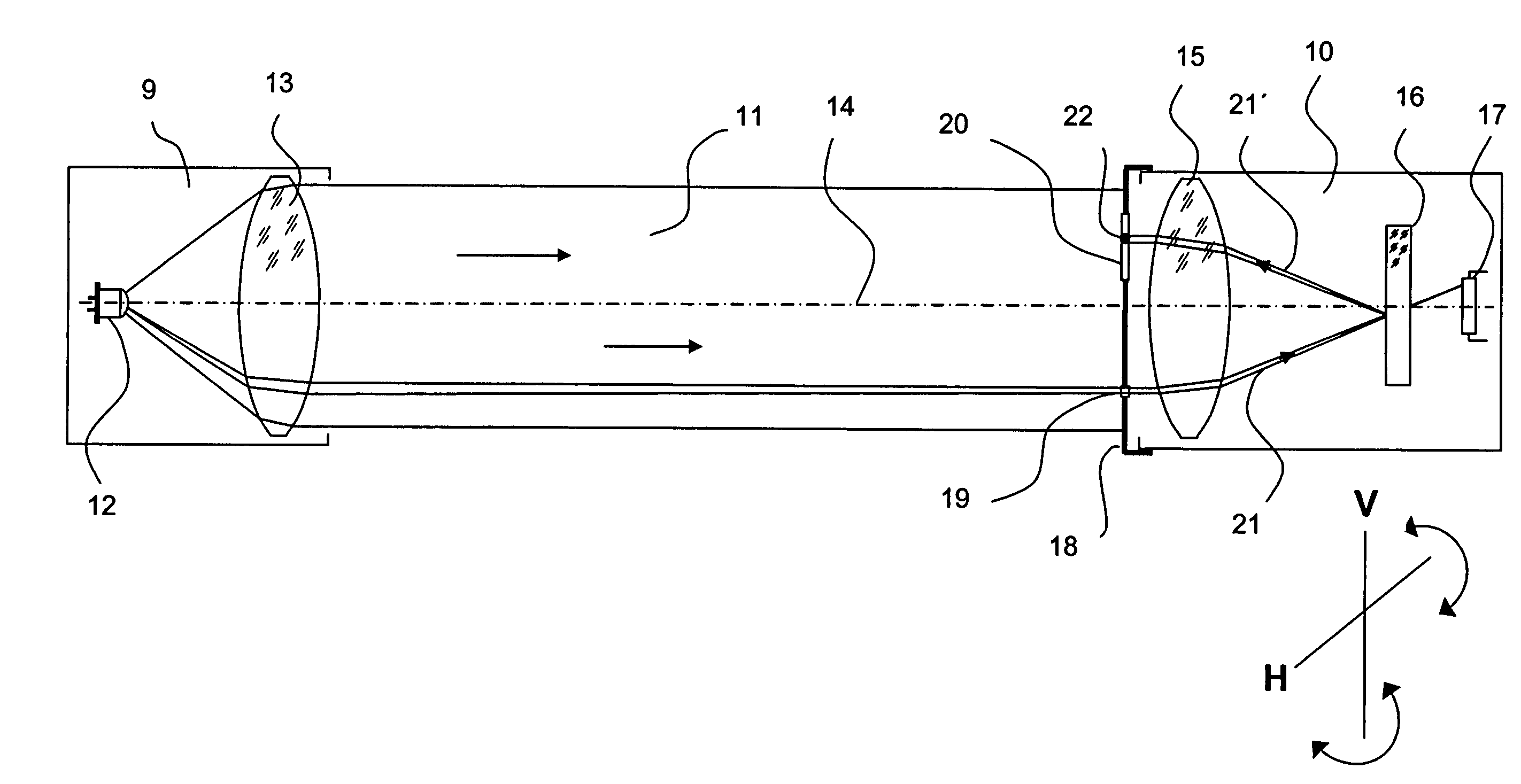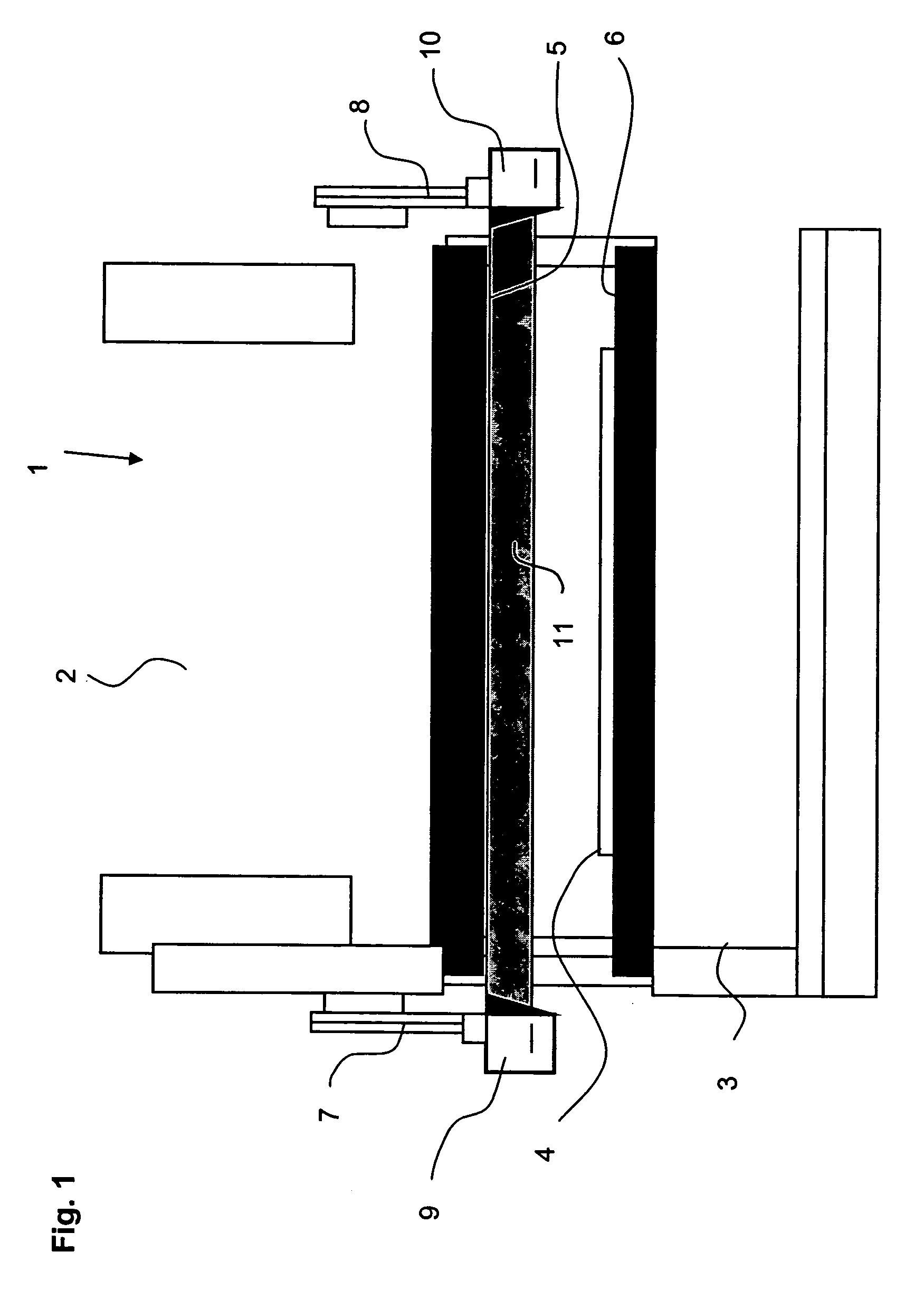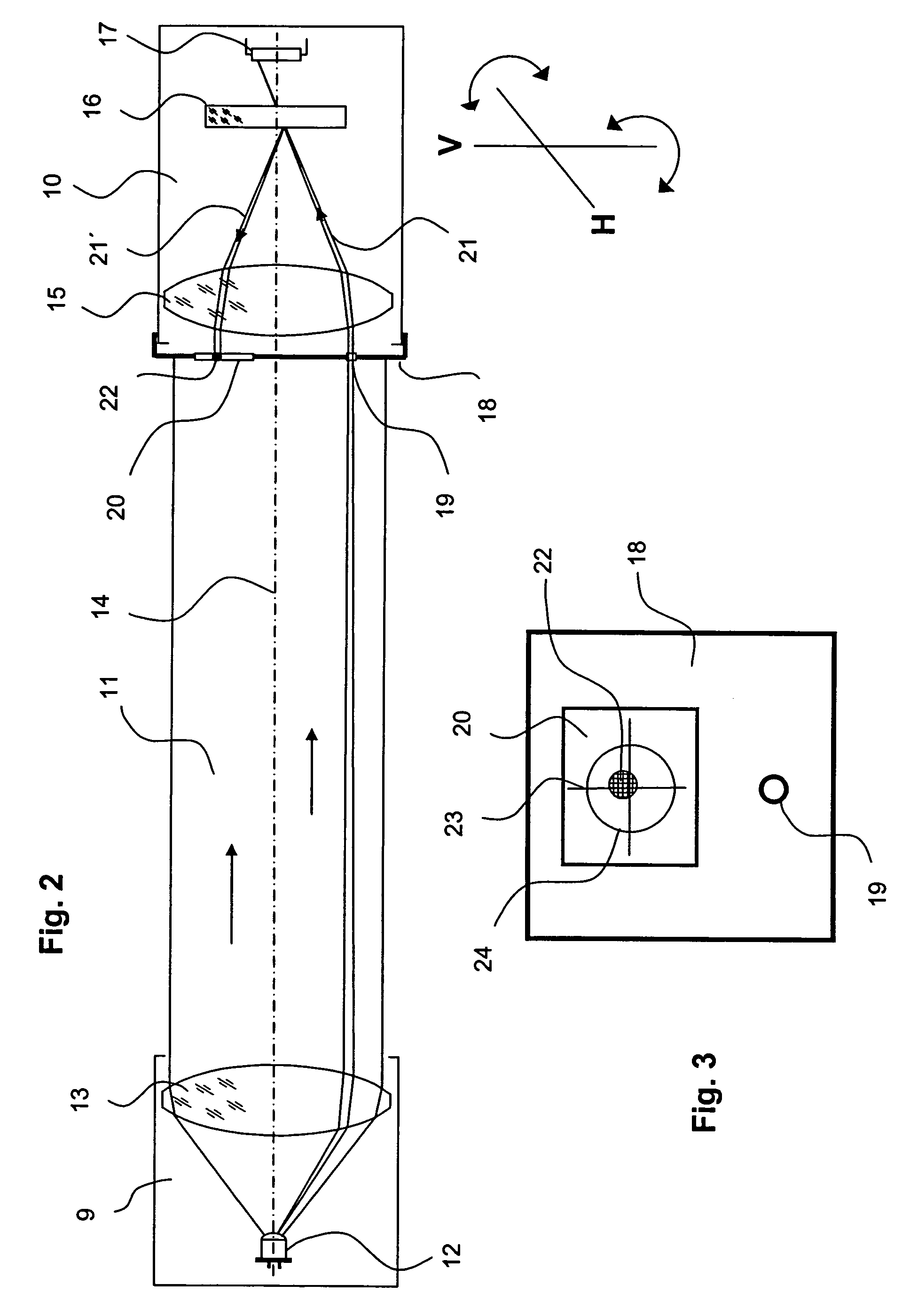Precision adjustable light barrier
a light barrier and precision technology, applied in the field of light barriers, can solve the problems of insufficient evaluation of inability to completely eliminate the influence of neighboring systems, and inability to fully evaluate the information contained in the distribution of light in the beam cross-section, etc., and achieve the effect of reducing the alignment tim
- Summary
- Abstract
- Description
- Claims
- Application Information
AI Technical Summary
Benefits of technology
Problems solved by technology
Method used
Image
Examples
Embodiment Construction
[0022]A bending press 1 shown in FIG. 1 has a movable tool 2 which moves vertically downward during a working cycle towards a stationary tool 3. Between the movable tool 2 and the stationary tool 3 is a workpiece 4 that is to be worked. The movable tool 2 and the stationary tool 3 have coordinated tool edges 5 and 6 for working workpiece 4. During a working cycle, the distance between the two tool edges 5 and 6 gradually diminishes. The working cycle of the bending press is under the control of a control unit (not shown). A triggering signal for this can be activated by a hand or foot switch, or with an automatic machine timer.
[0023]A light barrier having a light emitter 9 and a light receiver 10 is mounted on movable tool 2 with two adjustable holders 7 and 8. The installation of light emitter 9 and light receiver 10 is such that a bundle or array of rays 11 is formed between light emitter 9 and light receiver 10 directly in front of tool edge 5. If, during the vertical downward mo...
PUM
| Property | Measurement | Unit |
|---|---|---|
| receiving angle | aaaaa | aaaaa |
| surface area | aaaaa | aaaaa |
| translucent | aaaaa | aaaaa |
Abstract
Description
Claims
Application Information
 Login to View More
Login to View More - R&D
- Intellectual Property
- Life Sciences
- Materials
- Tech Scout
- Unparalleled Data Quality
- Higher Quality Content
- 60% Fewer Hallucinations
Browse by: Latest US Patents, China's latest patents, Technical Efficacy Thesaurus, Application Domain, Technology Topic, Popular Technical Reports.
© 2025 PatSnap. All rights reserved.Legal|Privacy policy|Modern Slavery Act Transparency Statement|Sitemap|About US| Contact US: help@patsnap.com



